No sugar added strawberry-basil jam transforms summer’s freshest strawberries and fresh basil into a delicious, naturally sweetened condiment.
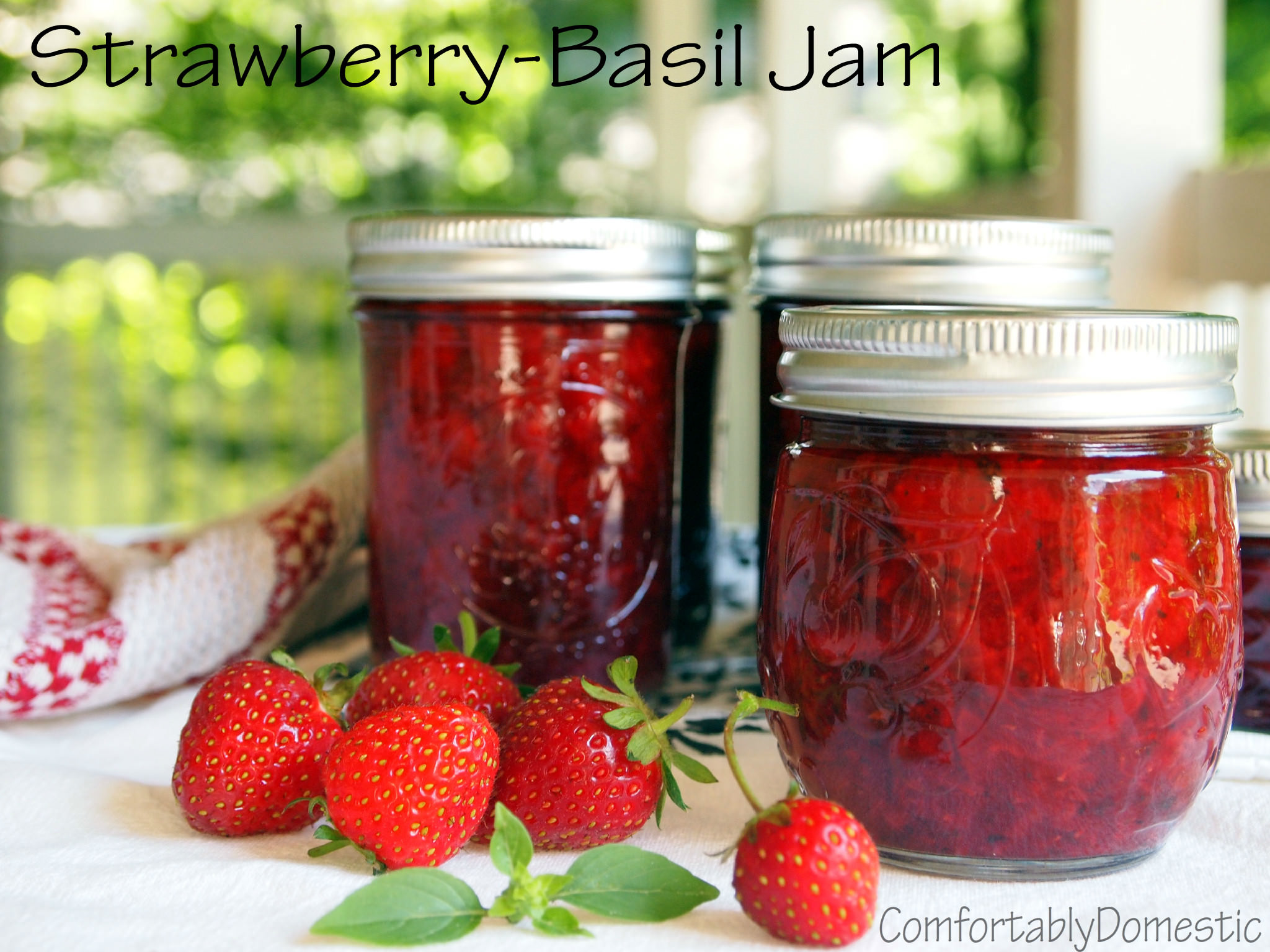 During my first trip to visit the 45th parallel region as an adult, I stumbled into a teeny-tiny market/hardware store. The fact that the sign out front boasted both groceries and hardware drew me in. Once inside, I was struck by the most amazing assortment of locally produced food that I had ever seen. This was my introduction to local, sustainable food products.
During my first trip to visit the 45th parallel region as an adult, I stumbled into a teeny-tiny market/hardware store. The fact that the sign out front boasted both groceries and hardware drew me in. Once inside, I was struck by the most amazing assortment of locally produced food that I had ever seen. This was my introduction to local, sustainable food products.
Of the many things I purchased that day, my absolute favorite was a wonderful Strawberry-Basil Jam made from the folks at Food For Thought. I loved it so much, that I went back to the market and bought every jar on the shelf before heading back home, and promptly hoarded it upon my return. That’s some seriously good stuff!
Now that I live in the region, I’m just a stones throw away from some of the tastiest fruit grown in the entire country. (If I do say so myself!) With all that fruity abundance, making my own jam is like a summer rite of passage. It just has to happen, and happen often.
I don’t know why it took me nearly 7 years to try to replicate Food for Thought’s brilliant strawberry-basil jam creation at home. It didn’t occur to me…until I was elbow deep in washing 30 pounds of freshly picked strawberries. Then my friend Paul dropped off some of his homegrown dried basil.
I grabbed the bag with one hand and smacked myself in the head with the other! Duh. Then I did a little happy dance. And then Paul looked at me a little funny.
So I very enthusiastically explained that I was going to put some of his dried basil into my strawberry-basil jam.
Then he looked at me like I had sprouted a second head. So I told him the story of my jam-hoarding experience, and how it had never occurred to me to try to make my own strawberry-basil jam, but now that it did, I was super excited!
And then Paul kept smiling and nodding as he slowly backed off my porch. He’s kind of used to me getting super excited about food related stuff, but he still took the opportunity to escape be on his way.
Now I realize that combining strawberries with basil may seem a little odd, but trust me when I tell you–it is fabulous! The sweetness of the berries is lightly tempered by a savory hint of basil, and because this recipe uses fruit juice in place of granulated sugar, the flavor of fresh, ripe strawberries really shines through. You’ve got to try this stuff!
If for some reason, you think for even one minute that you could never, possibly make your own jam, I’m here to tell you that you are wrong. I’m a firm believer that anyone can make their own homemade jam. Truly.
If you think I’m nuts, go ahead and read my posts on Home Canning Basics 101, and Home Canning Basics 102: The Cooked Jam Method for more information. Then roll up your sleeves and get ready to make some jam!
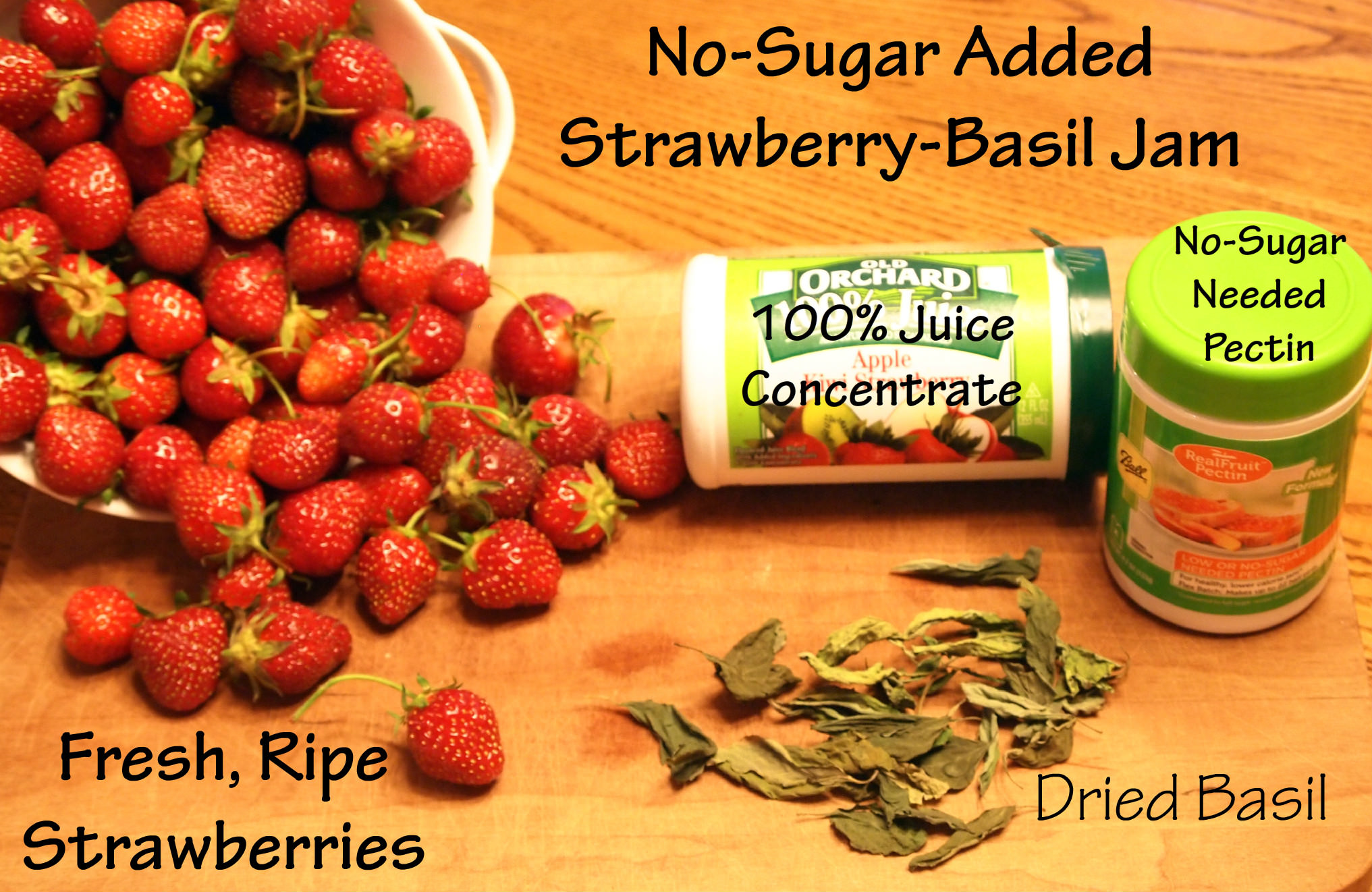
Start with fresh, ripe strawberries, 100% fruit juice concentrate, Ball No-Sugar-Needed Pectin, and dried basil.
You’ll also need to get all of the requisite canning supplies ready as outlined in the Home Canning tutorial links listed above.
Pssst! I’ll let you in on a little secret: if the thought of adding basil to jam kind of skeeves you out, then go ahead and skip it. You’ll still end up with delicious strawberry jam.
Fill the water bath canner, cover it, and set it over high heat to come to a rolling boil. Also be sure to warm the seals, and that jars are hot, sterilized, and ready to go.
Rinse, hull, and chop the strawberries before putting them into a large bowl.
Use a potato masher to crush the berries.
Measure the appropriate amount of crushed strawberries, and place them in a large pot.
Add the pectin to the crushed strawberries. I use Ball brand Low Sugar or No-Sugar-Needed Pectin, so I can only speak for the results of this recipe using this particular pectin. If you use a different brand, follow the strawberry jam recipe/instructions as outlined in their instructions.
Add a touch of softened butter to help cut down on the foam created as the fruit cooks.
 Bring the fruit mixture to a rolling boil, (one which can’t be stirred down,) while stirring constantly. Once the jam reaches rolling boil, continue to stir while pouring in the juice concentrate. Continue stirring and heating until it returns to a rolling boil. Boil hard for 1 more minute. Stir, stir, stir! Don’t stop stirring the jam during this entire process.
Bring the fruit mixture to a rolling boil, (one which can’t be stirred down,) while stirring constantly. Once the jam reaches rolling boil, continue to stir while pouring in the juice concentrate. Continue stirring and heating until it returns to a rolling boil. Boil hard for 1 more minute. Stir, stir, stir! Don’t stop stirring the jam during this entire process.
Stir the dried basil into the jam. Ladle hot strawberry-basil jam into hot jars, leaving 1/4-inch head space. Wipe the rims clean with a clean, damp cloth before placing the warmed seals on the jars, and securing them well with the bands. Process in a water bath canner at full boil for 10 minutes. Remove the jars and place upright on a clean, towel-lined counter.

Check lids after 24 hours to ensure a proper seal. If sealed properly, the lids should not flex up and down when lightly pressed in the center. If they do, check bands and lids and try processing again, or refrigerate and use within 3 weeks.
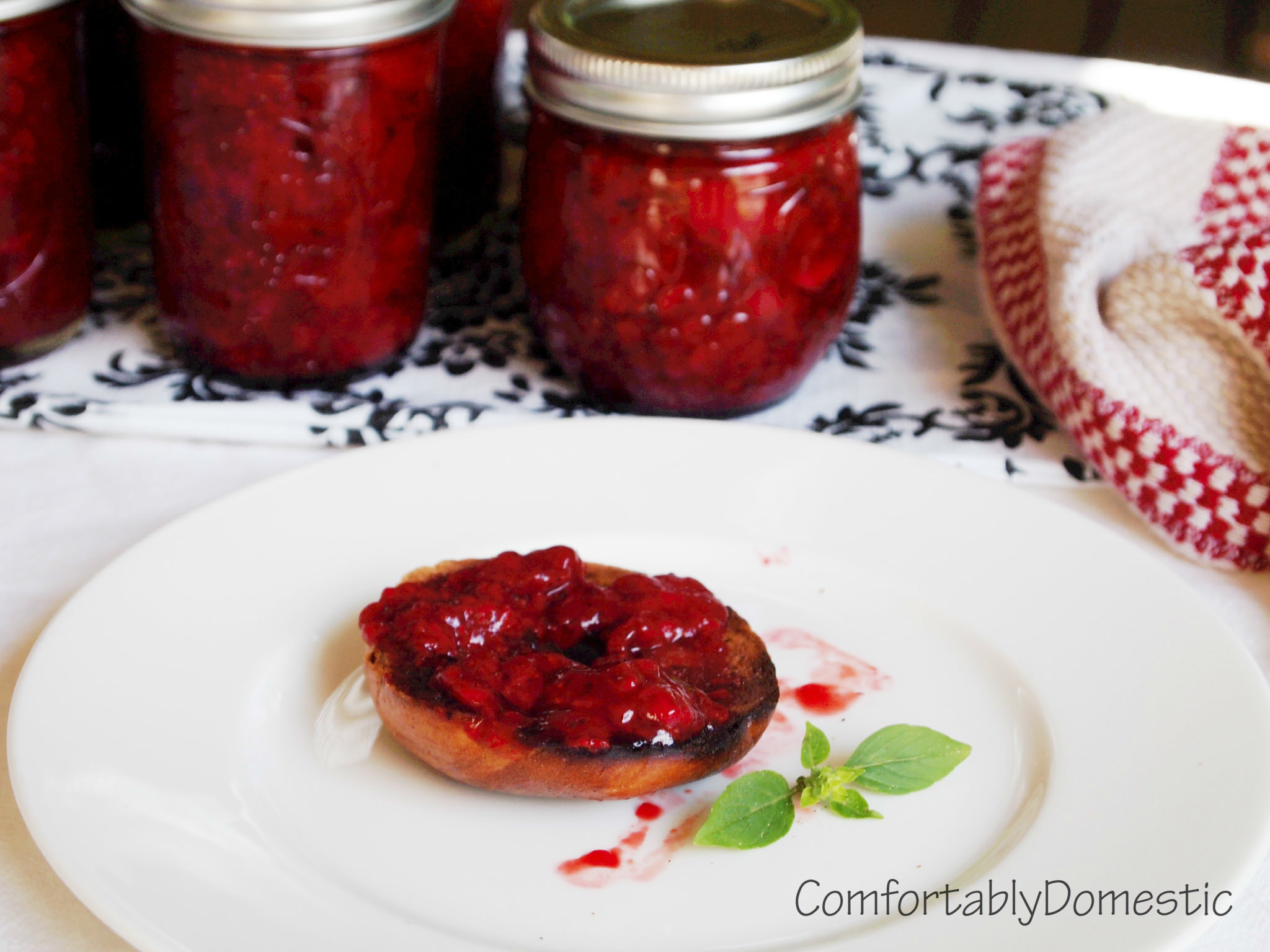
Strawberry-Basil Jam is equally at home on biscuits, a slice of toast, or even as the basis for a vinaigrette dressing.
I sure hope that you love the strawberry-basil jam as much as I do!
♥♥♥
Kirsten Kubert
Yields 8 half-pint jars
No sugar added strawberry-basil jam transforms summer's freshest strawberries and fresh basil into a delicious, naturally sweetened condiment.
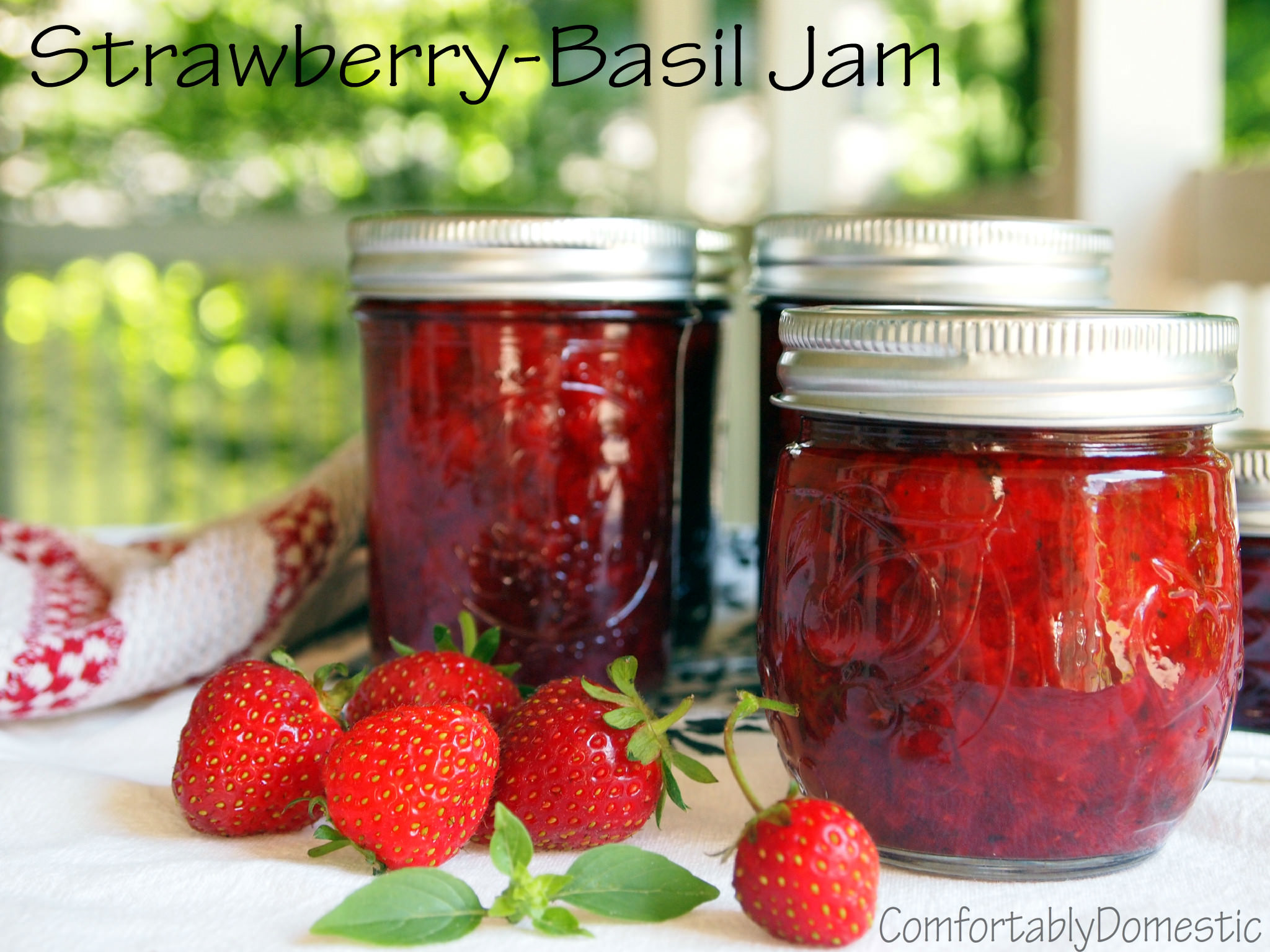
Ingredients
- 8 C. Strawberries; rinsed, hulled and crushed (About 3 quarts to start)
- 1 1/3 C. 100% Apple Kiwi Strawberry juice concentrate (such as Old Orchard brand)
- 4 ½ Tbs. Ball Real Fruit Low or No Sugar Pectin
- ½ Tbs. unsalted butter
- 2 tsp. dried basil, crushed (omit for plain strawberry jam)
- 8 half-pint canning jars
- 8 new canning jar lids/seals
- 8 canning jar bands
- Canning funnel
- Lots of clean towels and dishrags
- Jar lifter
- Magnetic lid lifting wand, optional
- Large water bath canner with lid
- Large (4 qt.) saucepan
Instructions
- Fill water bath canner with water and cover with the lid. Set over high heat and bring to a full boil.
- Sterilize clean jars and keep hot while working. I use my dishwasher on the sanitizing setting, timed to be ready when I am done making the jam. A second water bath canner can also be used to boil jars for at least 10 minutes to sterilize. (Jars must be dried prior to use.)
- Warm jar lids in a shallow pan of simmering water while working.
- Rinse, hull, and chop strawberries. Place chopped strawberries into a large bowl, and crush in batches with a potato masher.
- Pour crushed berries into a large (4 qt.) saucepan, and add the butter.
- Heat berry mixture over medium-high heat, stirring constantly, until it reaches a rolling boil—one which cannot be stirred down.
- Pour juice concentrate into the pan. Continue to stir and return to a rolling boil. Boil hard for 1 minute.
- Stir in dried basil.
- Ladle hot jam into hot jars, one by one, leaving ¼ inch headspace. Wipe rims with a clean, damp rag to remove any jam splatter. (Rims must be free of all debris to seal properly.)
- Center warmed lids on jars. Screw on bands and adjust to finger tight; repeat with remaining jam/jars.
- Place filled jars into the water bath canner, ensuring that the jars are covered by 2 inches of water. Return to a steady boil.
- Process jars at a steady boil for 10 minutes. Remove the jars from the bath, and set upright on a clean towel-lined counter to cool.
- Check lids after 24 hours. If sealed properly, the lids should not flex up and down when the center is lightly pressed. If you have jars that didn’t seal, check bands and try processing again; or refrigerate and use jam within three weeks.
- Wipe down cooled/sealed jars with warm water to remove any sticky residue. Store jam in a cool place out of direct sunlight.
Notes
I’ve done my best with these instructions to be as accurate as possible. My instructions should not be considered absolute, nor should they serve as a substitute for following proper and safe canning procedures as outlined by the Food and Drug Administration, as well as your canning equipment/supplies manufacturers. Also, all brand’s of pectin are not created equal, nor can they be substituted for each other in equal measure to achieve the same results. When in doubt, follow your pectin manufacturer’s instructions.)
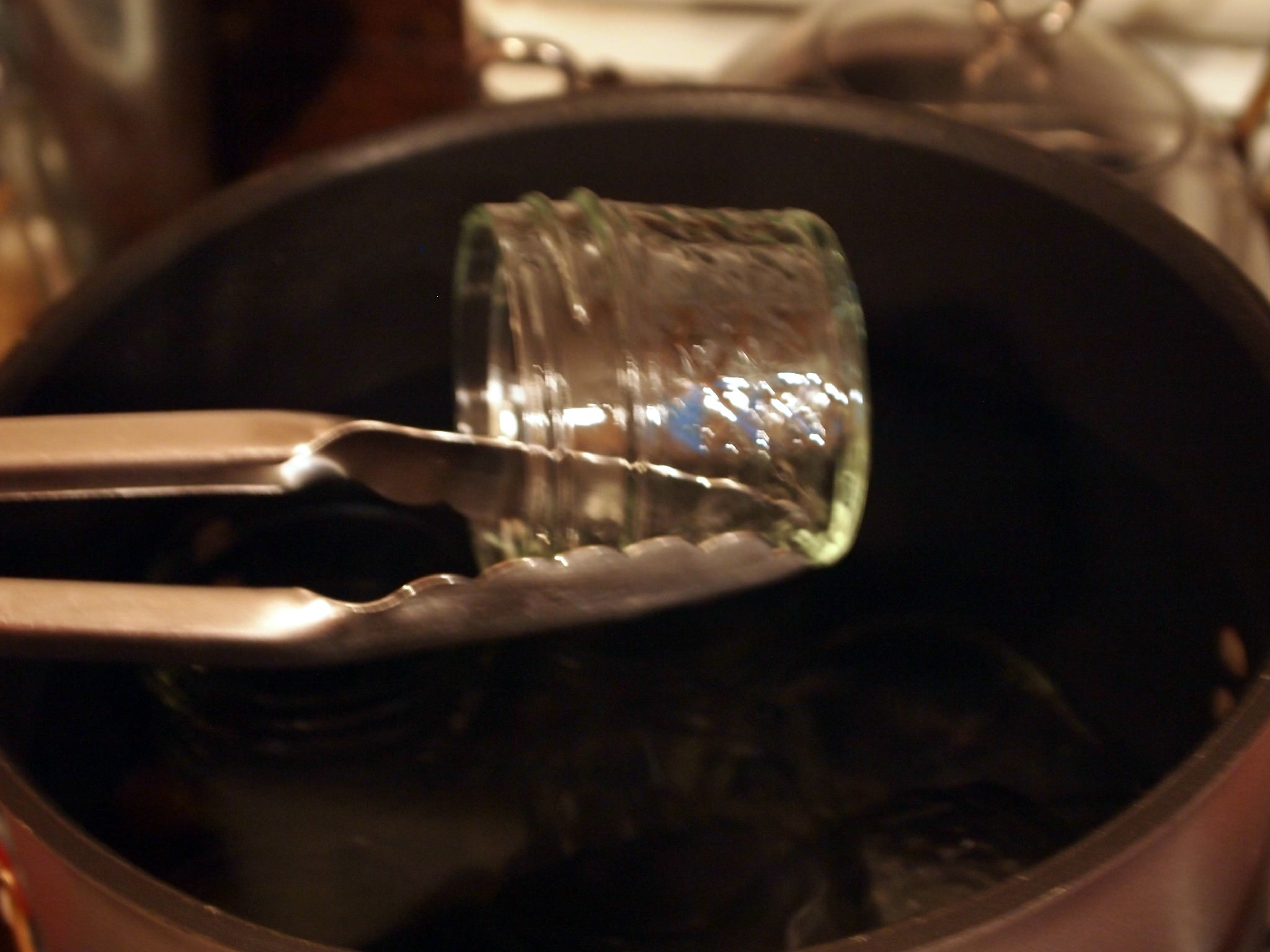

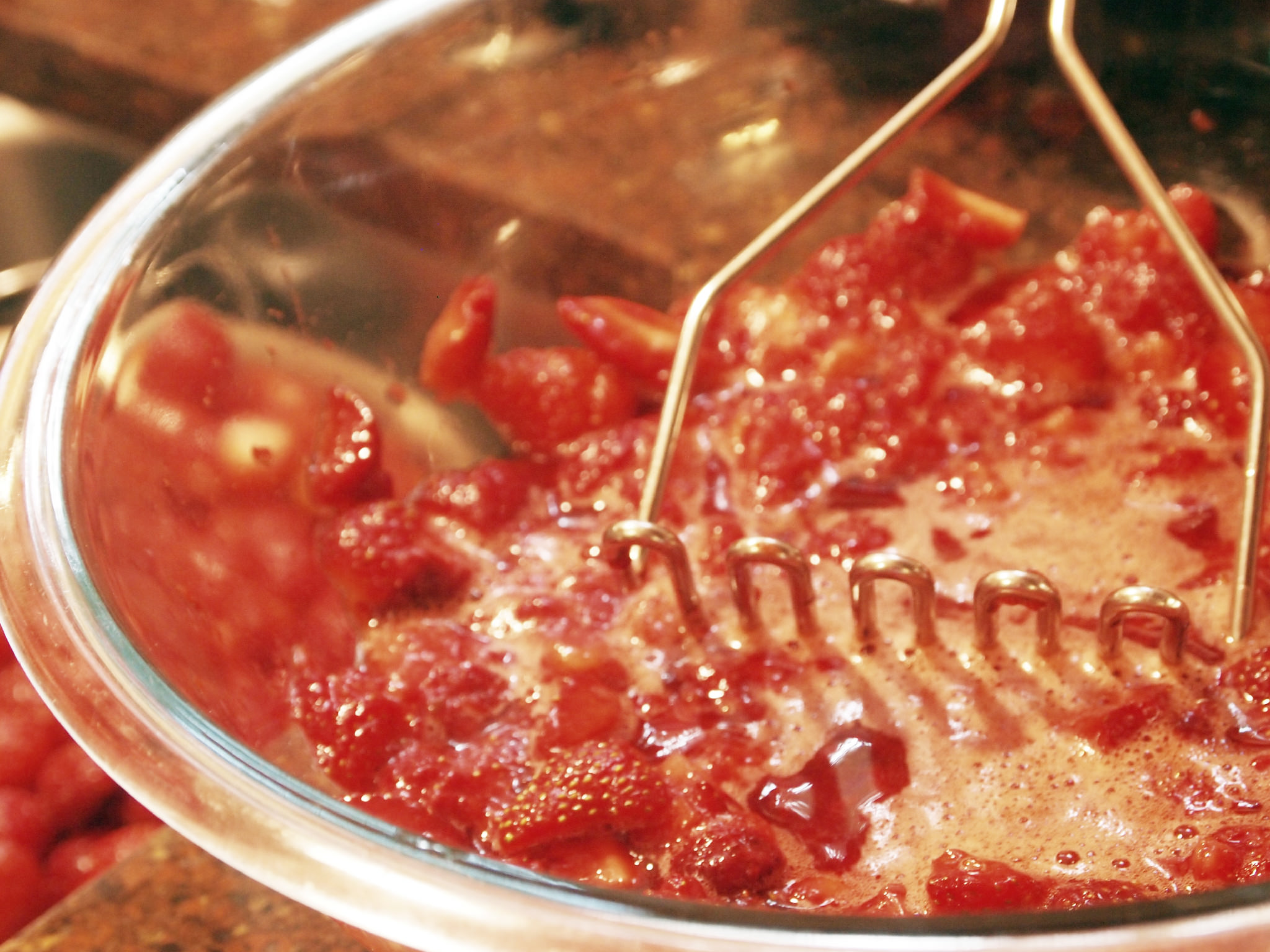
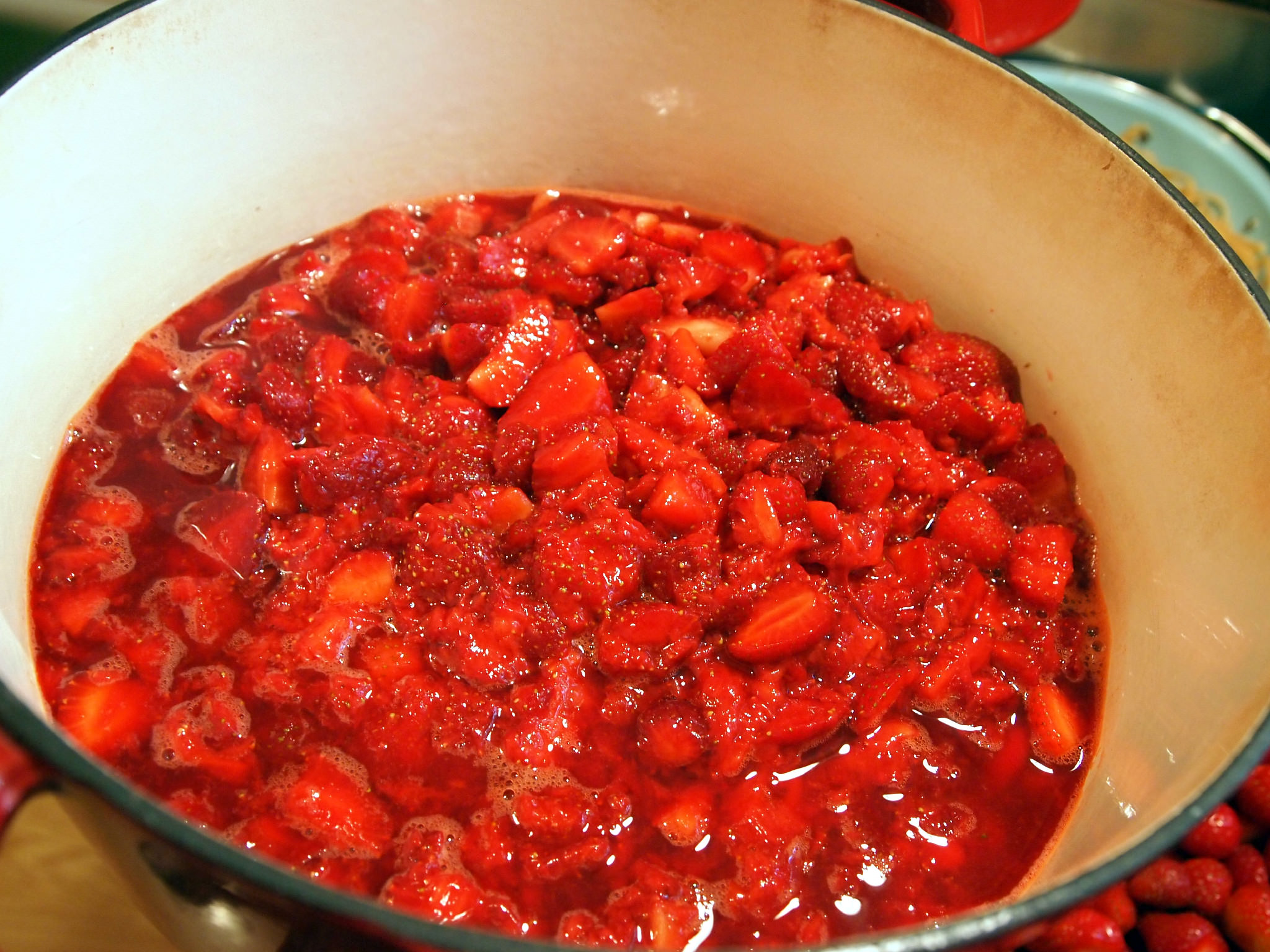
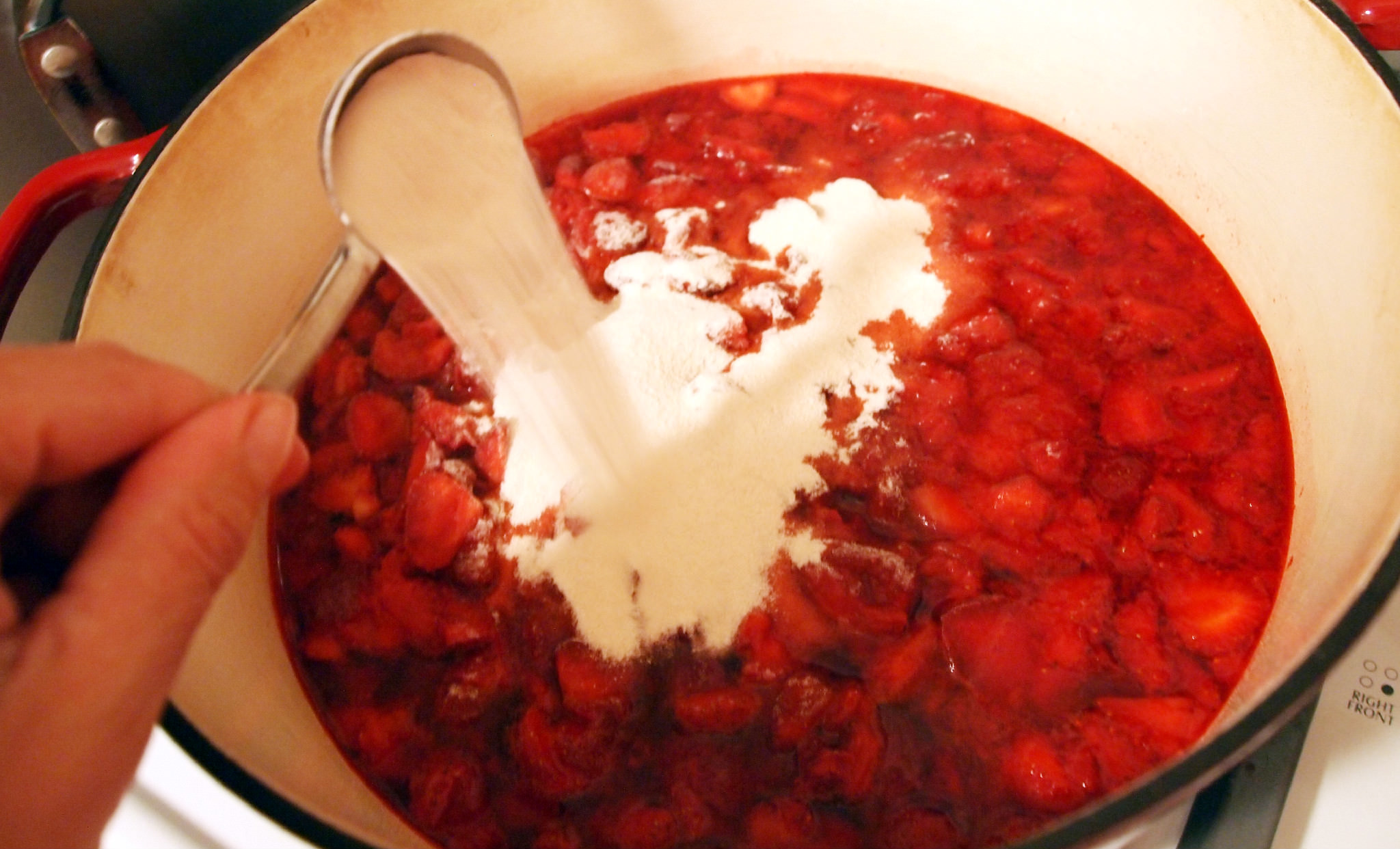
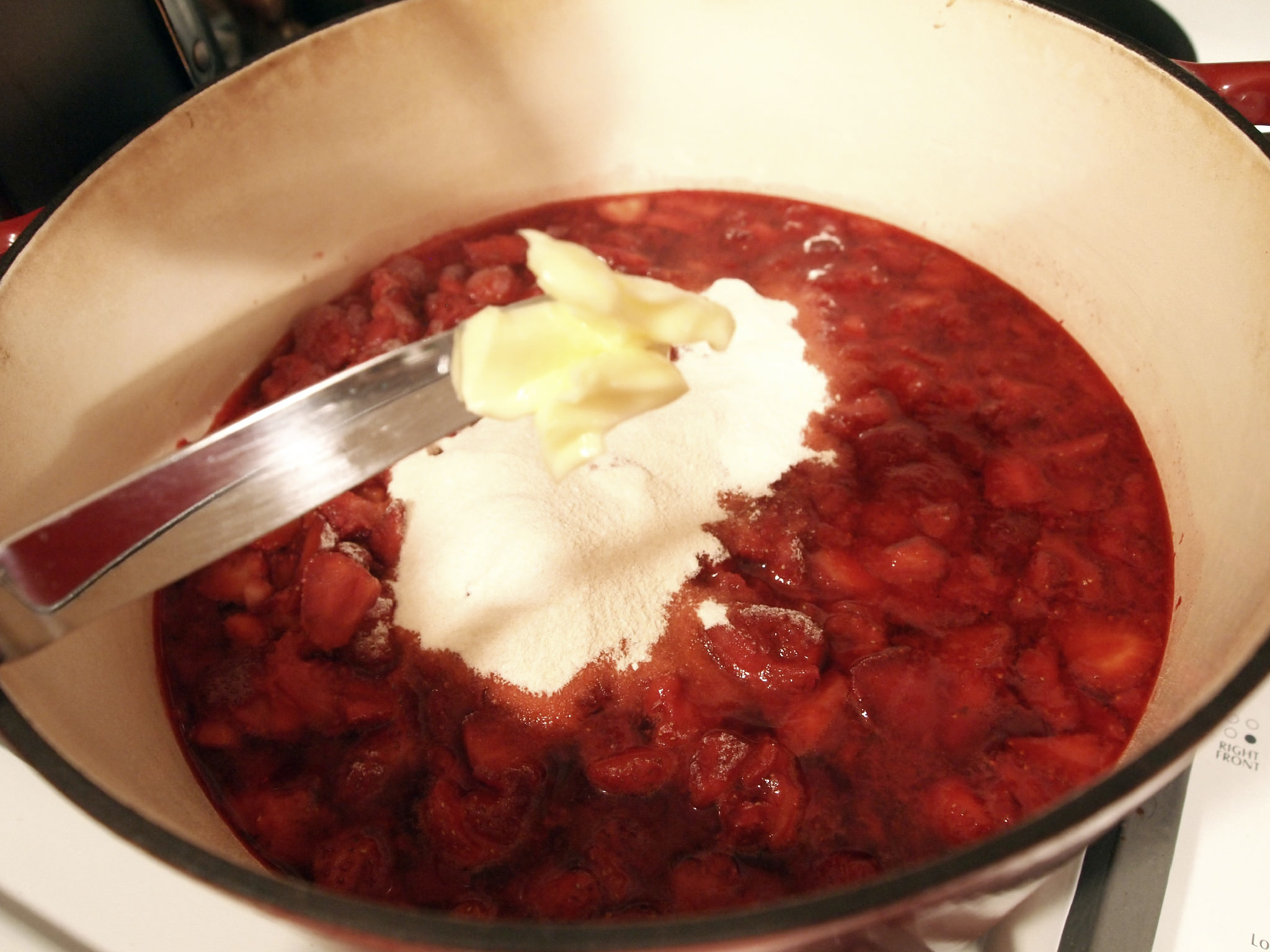
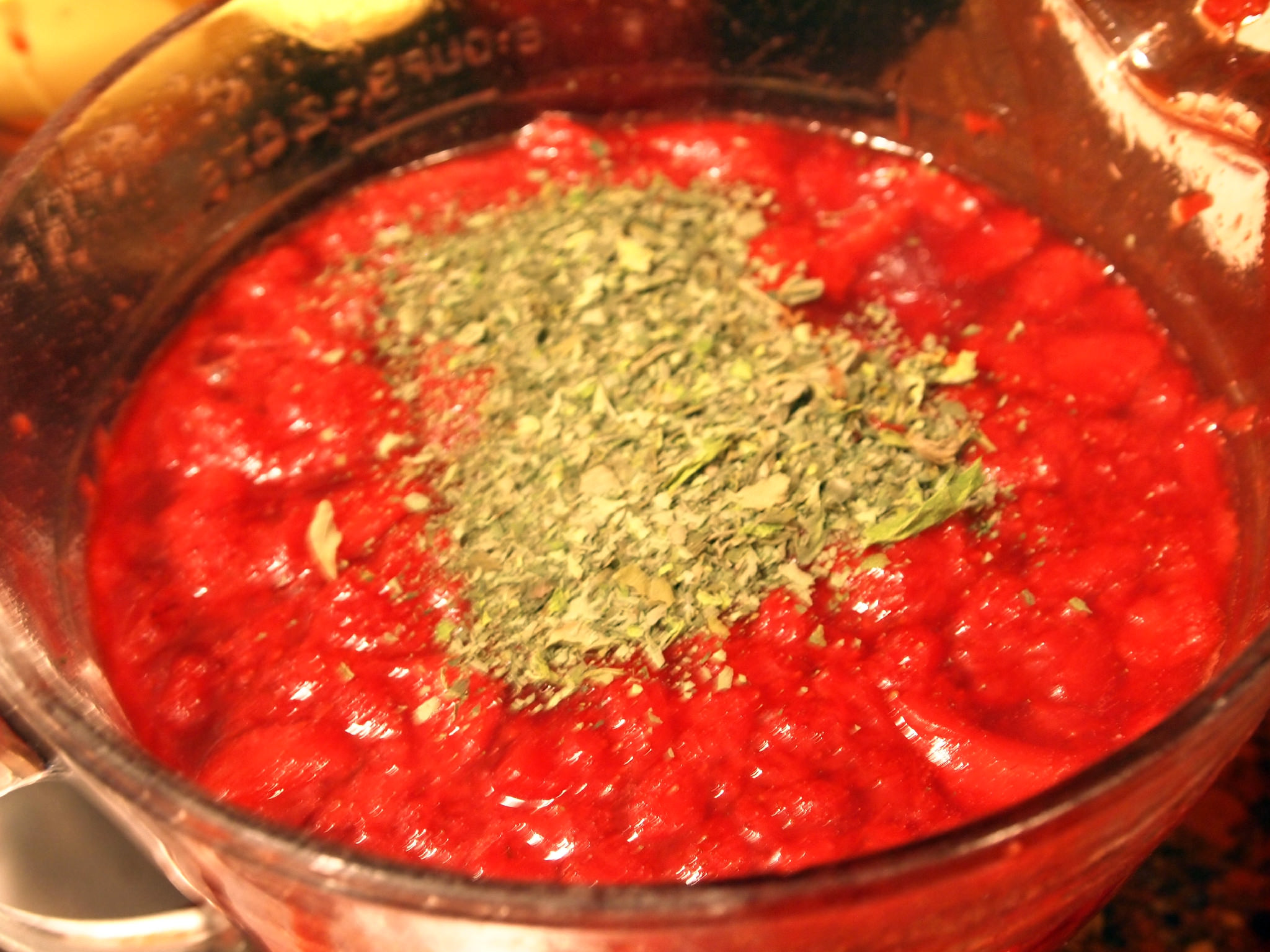

 Save Recipe
Save Recipe





Comments